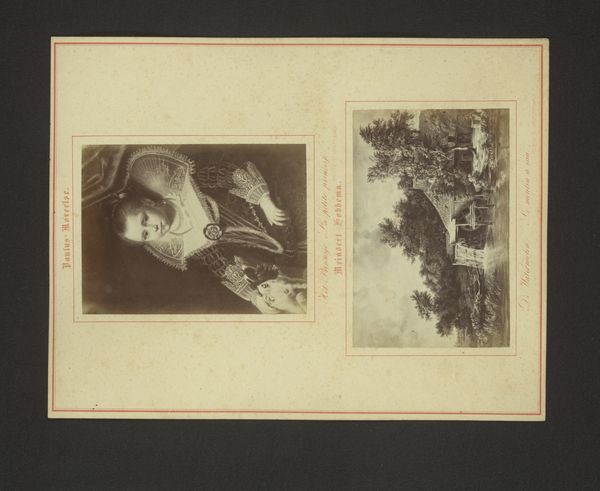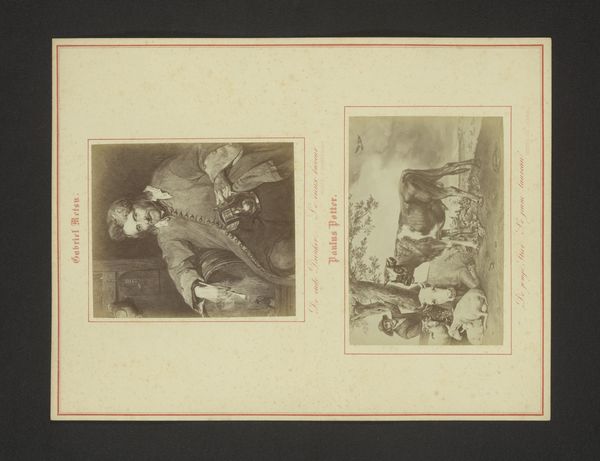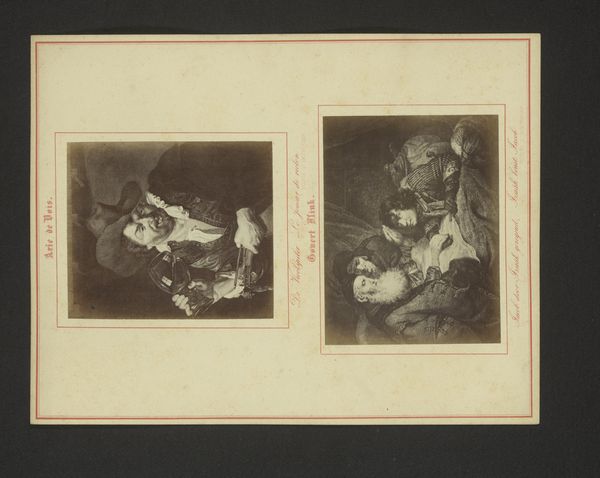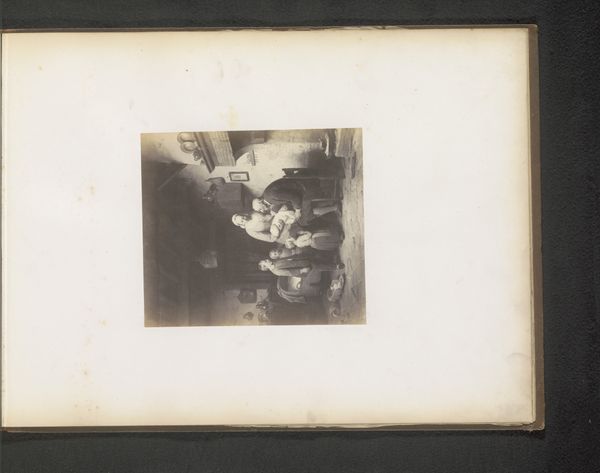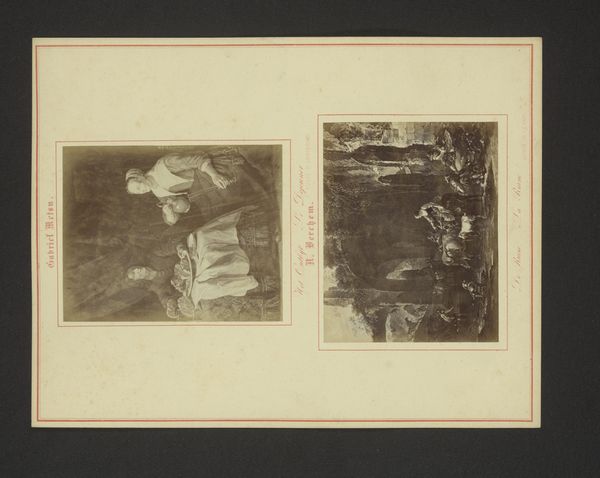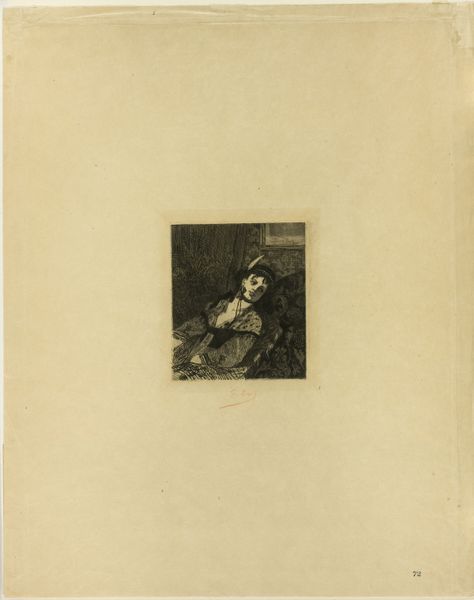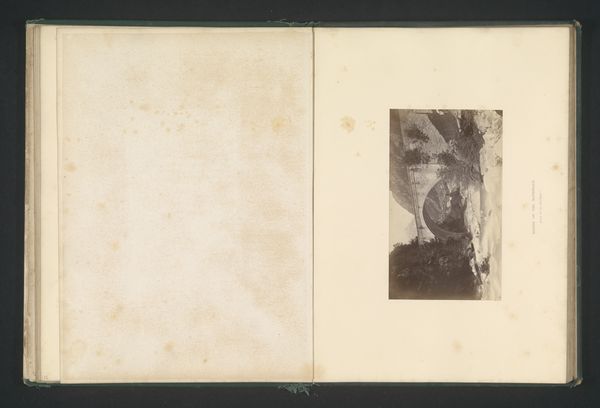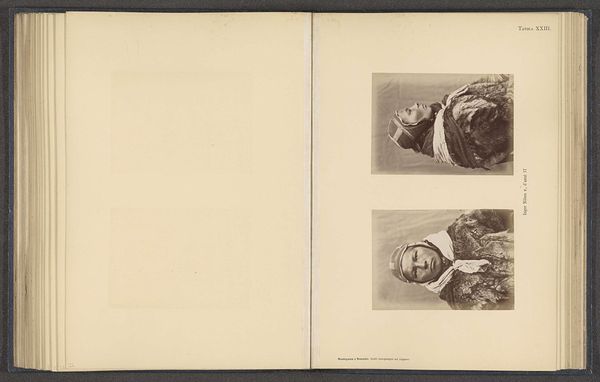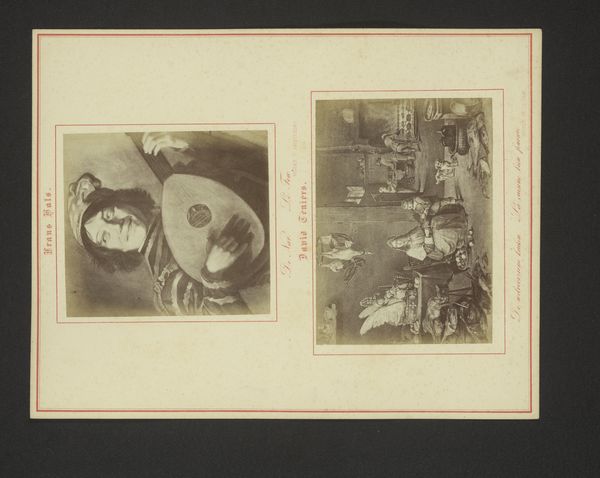
Fotoreproducties van een portret van Willem de Zwijger door Michiel Jansz. van Mierevelt en van ‘De Staalmeesters’ door Rembrandt van Rijn c. 1866 - 1874
0:00
0:00
anonymous
Rijksmuseum
print, photography
#
portrait
#
dutch-golden-age
# print
#
photography
#
genre-painting
#
paper medium
Dimensions: height 117 mm, width 91 mm, height 90 mm, width 131 mm
Copyright: Rijks Museum: Open Domain
Curator: Here we have "Photographic reproductions of a portrait of Willem de Zwijger by Michiel Jansz. van Mierevelt and of ‘The Staalmeesters’ by Rembrandt van Rijn", dating from about 1866 to 1874. Both iconic images of Dutch history rendered through photography, a relatively new medium at the time. Editor: The sepia tones give both images such a lovely antique feel. It's a study in contrasts, really. The crisp formality of Willem versus the lively dynamism of Rembrandt’s collective portrait. Curator: Indeed. Consider the cultural capital embedded within these choices. Reproducing paintings of national significance like these served to democratize access. Photography was becoming a tool for disseminating art, and reinforcing cultural identity. Editor: It is remarkable how well the photographic process captures the textural detail, particularly in Willem’s ruff. And look at how Rembrandt’s signature light is handled – it’s all very cleverly translated into shades of gray. Curator: I see it as the Industrial Revolution meeting the Dutch Golden Age. On the one hand, the mechanical reproduction suggests a modern, industrial means of consuming art. On the other hand, you've got these key figures representing Dutch identity and history. These photos speak to the rising middle class with greater access to knowledge, who are in turn influencing society. Editor: And that carefully calculated composition, both portraits nestled on what appears to be paper, beautifully bordered with a subtle red line… It’s elegant and so pleasing to the eye. Curator: It does present an intriguing case about access, class, and how images like these might have been distributed as promotional items. In some ways, it could even be considered among the earliest forms of art advertisement. Editor: It shows us how something produced through industrial processes can become an object of beauty and historical significance in its own right, not just as a copy of older works. A compelling work of art. Curator: A demonstration of power in images, from painting, to photographic dissemination and reproduction. It speaks volumes about both commerce and nationalism.
Comments
No comments
Be the first to comment and join the conversation on the ultimate creative platform.
